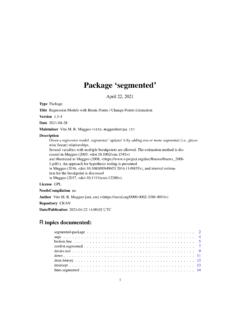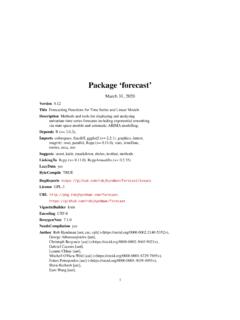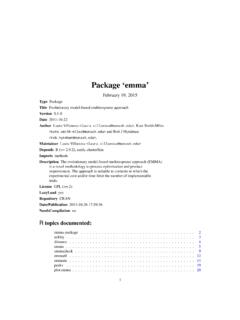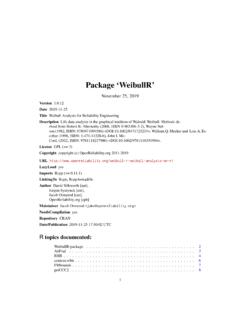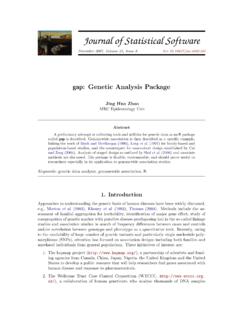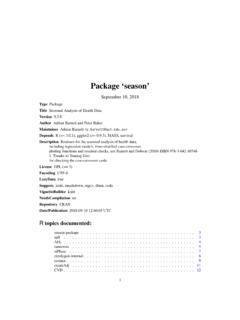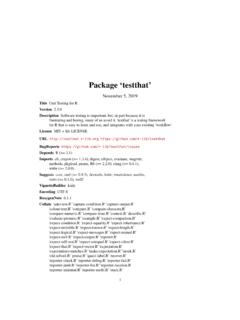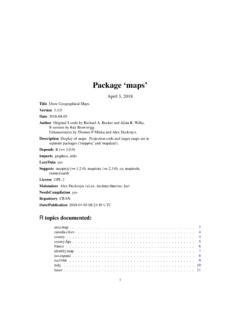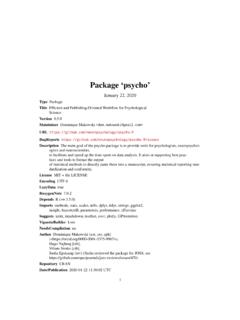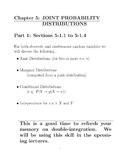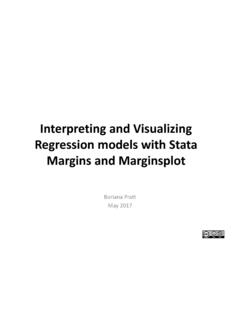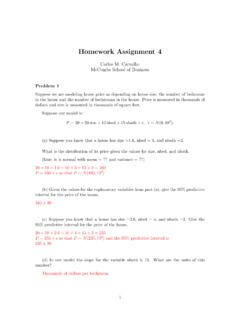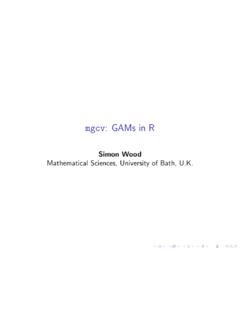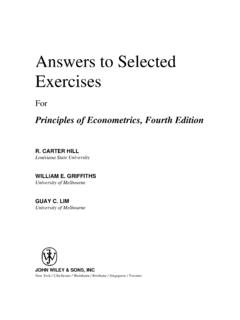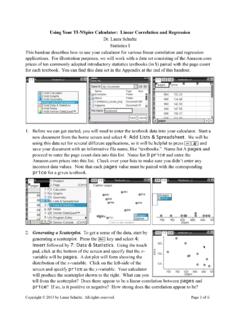Transcription of Package ‘effects’ - R
1 Package effects'. September 3, 2019. Version Date 2019-08-30. Title effect Displays for Linear, Generalized Linear, and Other Models Depends R (>= ), carData Suggests pbkrtest (>= ), nlme, MASS, poLCA, heplots, splines, ordinal, car, knitr, betareg, alr4. Imports lme4, nnet, lattice, grid, colorspace, graphics, grDevices, stats, survey, utils, estimability LazyLoad yes LazyData yes Description Graphical and tabular effect displays, , of interactions, for various statistical models with linear predictors. License GPL (>= 2). URL , VignetteBuilder knitr Author John Fox [aut, cre], Sanford Weisberg [aut], Brad Price [aut], Michael Friendly [aut], Jangman Hong [aut], Robert Andersen [ctb], David Firth [ctb], Steve Taylor [ctb], R Core Team [ctb]. Maintainer John Fox Repository CRAN. Repository/R-Forge/Project effects Repository/R-Forge/Revision 385.
2 Repository/R-Forge/DateTimeStamp 2019-08-30 17:33:03. 1. 2 effects- Package Date/Publication 2019-09-03 17:20:08 UTC. NeedsCompilation no R topics documented: effects- Package .. 2. effect .. 3. EffectMethods .. 14. effectsHexsticker .. 18. effectsTheme .. 19. LegacyArguments .. 20.. 22. predictorEffects .. 30.. 33. Index 36. effects- Package effect Displays for Linear, Generalized Linear, and Other Models Description Graphical and tabular effect displays, , of interactions, for various statistical models with linear predictors. Details Package : effects Version: Date: 2019-08-30. Depends: R (>= ), carData Suggests: pbkrtest (>= ), nlme, MASS, poLCA, heplots, splines, ordinal, car, knitr, betareg, alr4. Imports: lme4, nnet, lattice, grid, colorspace, graphics, grDevices, stats, survey, utils, estimability LazyLoad: yes LazyData: yes License: GPL (>= 2).
3 URL: , This Package creates effect displays for various kinds of models, as partly explained in the refer- ences. Typical usage is plot (allEffects( model )) or plot (predictorEffects( model )), where model is an appropriate fitted- model object. Additional arguments to allEffects, predictorEffects and plot can be used to customize the resulting displays. The function effect can be employed to produce an effect display for a particular term in the model , or to which terms in the model are marginal . The function predictorEffect can be used to construct an effect display for a partic- ularly predictor. The function effect may similarly be used to produce an effect display for any effect 3. combination of predictors. In any of the cases, use plot to graph the resulting effect object. For linear and generalized linear models it is also possible to plot partial residuals to obtain (multidimen- sional) component+residual plots.
4 See ? effect , ? effect , ?predictorEffect, and ? for details. Author(s). John Fox, Sanford Weisberg, Michael Friendly, Jangman Hong, Robert Anderson, David Firth, Steve Taylor, and the R Core Team. Maintainer: John Fox References Fox, J. and S. Weisberg (2019) An R Companion to Applied Regression, Third Edition Sage Publi- cations. Fox, J. (1987) effect displays for generalized linear models. Sociological Methodology 17, 347 . 361. Fox, J. (2003) effect displays in R for generalised linear models. Journal of Statistical Software 8:15, 1 27, < >. Fox, J. and R. Andersen (2006) effect displays for multinomial and proportional-odds logit models. Sociological Methodology 36, 225 255. Fox, J. and J. Hong (2009). effect displays in R for multinomial and proportional-odds logit models: Extensions to the effects Package . Journal of Statistical Software 32:1, 1 24, <http: >.
5 Fox, J. and S. Weisberg (2018). Visualizing Fit and Lack of Fit in Complex Regression Models: effect Plots with Partial Residuals. Journal of Statistical Software 87:9, 1 27, <https://www. >. effect Functions For Constructing effect Displays Description effect and effect construct an "eff" object for a term (usually a high-order term) in a linear model (fit by lm or gls) or generalized linear model (fit by glm), or an "effpoly" object for a term in a multinomial or proportional-odds logit model (fit respectively by multinom or polr), absorbing the lower-order terms marginal to the term in question, and averaging over other terms in the model . For multivariate linear models (of class "mlm", fit by lm), the function constructs a list of "eff" objects separately for the various response variables. effect builds the required object by specifying explicity a focal term like "a:b" for an a by b interaction.
6 effect specifies the predictors in the term, for example c("a","b"), rather than the term itself. effect is consequently more flexible and robust than effect , and will succeed with some models for which effect fails. The effect function works by constructing a call to effect . The effect and effect functions can also be used with many other models; see and the Defining effect Methods for Other Models vignette. 4 effect allEffects identifies all of the high-order terms in a model and returns a list of "eff" or "effpoly". objects ( , an object of type "efflist"). For information on computing and displaying predictor effects, see predictorEffect and For further information about plotting effects, see Usage effect (term, mod, , ..). ## Default S3 method: effect (term, mod, , ..). effect ( , mod, ..). ## S3 method for class 'lm'. effect ( , mod, xlevels=list(), , vcov.)
7 = vcov, se=TRUE, residuals=FALSE, quantiles=seq( , , by= ), , .., #legacy arguments: , typical, offset, confint, , , transformation). ## S3 method for class 'multinom'. effect ( , mod, xlevels=list(), , vcov. = vcov, se=TRUE, .., #legacy arguments: confint, , , typical). ## S3 method for class 'polr'. effect ( , mod, xlevels=list(), , , se=TRUE, latent=FALSE, .., #legacy arguments: confint, , , typical). ## S3 method for class 'svyglm'. effect ( , mod, , ..). allEffects(mod, ..). ## Default S3 method: allEffects(mod, ..). effect 5. Arguments term the quoted name of a term, usually, but not necessarily, a high-order term in the model . The term must be given exactly as it appears in the printed model , although either colons (:) or asterisks (*) may be used for interactions. If term is NULL, the function returns the formula for the linear predictor.
8 A character vector of one or more predictors in the model in any order. mod an object of the appropriate class. If no method exists for that class, will be called. xlevels this argument is used to set the number of levels for any focal predictor that is not a factor (where character and logical predictors are treated as factors). If xlevels=NULL, then each numeric predictor is represented by five values equally spaced over its range and then rounded to 'nice' numbers. If xlevels=n is an integer, then each numeric predictor is represented by n equally spaced val- ues rounded to 'nice' numbers. More generally, xlevels can be a named list of values at which to set each numeric predictor. For example, xlevels=list(x1=c(2,4,7),x2=5). would use the values 2, 4 and 7 for the levels of x1, use 5 equally spaced lev- els for the levels of x2, and use the default for any other numeric predictors.
9 If partial residuals are computed, then the focal predictor that is to appear on the horizontal axis of an effect plot is evaluated at 100 equally spaced values along its full range, and, by default, other numeric predictors are evaluated at the quantiles specified in the quantiles argument, unless their values are given explicitly in xlevels. an optional list of specifications affecting the values at which fixed predictors for an effect are set, potentially including: "default" specifies averaging over levels of a non-focal factor using the default that weights levels of the factor by sample size. "equal" uses unweighted averages over factor levels for non-focal factors. For finer control, the user can also provide a named numeric vector of weights for particular columns of the model matrix that correspond to regressors for the factor.
10 Character and logical predictors are treated as factors. For example, for a factor X with three levels a, b and c, the regressors generated using the default parameterization for a factor will be named Xb and Xc as the regressor for level a is usually excluded. The specification (Xb=1/2,Xc=1/4) would average over the levels of X with weight 1/2 for level b, 1/4 for c, and weight 1 = 1/2 - 1/4 = 1/4 for the baseline level a. Setting (Xb=1) will fix X and level b. typical a function to be applied to the columns of the model matrix over which the effect is "averaged"; with the exception of the "svyglm" method, the default is mean. For"svyglm" objects, the default is to use the survey-design weighted mean. It generally doesn't make sense to apply typical val- ues that aren't means ( , medians) to the columns of the model -matrix representing contrasts for factors.
